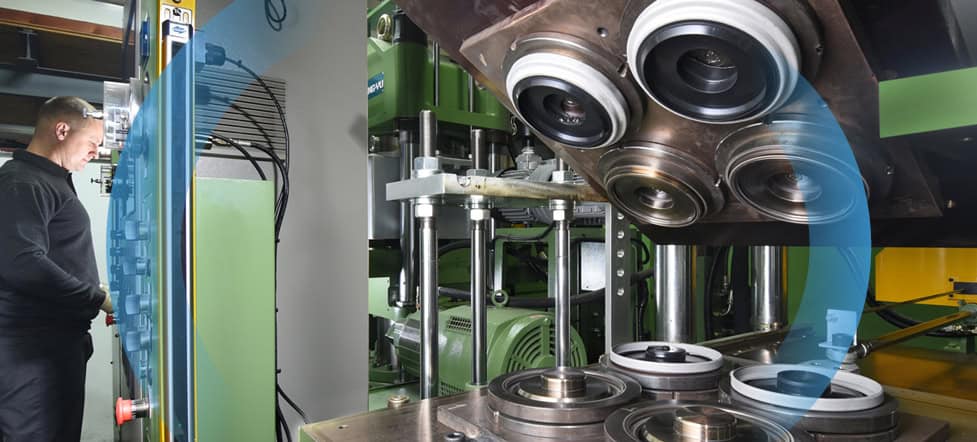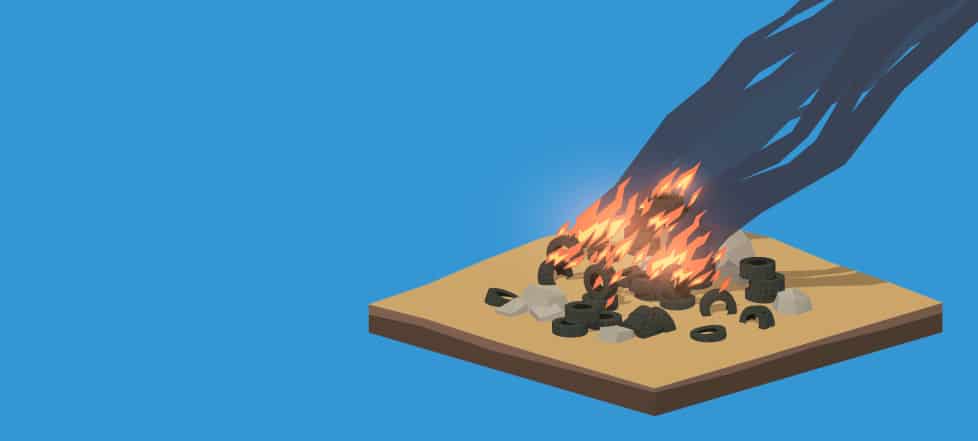This article was written in collaboration with Lee Rakach, a Chemical Process Engineer, from Techno Ad.
In the world of precision manufacturing, rubber seals and components play an essential role in industries such as agriculture, water systems, and machinery. Today, we’ll delve into three key manufacturing methods we employ: compression molding, injection molding, and cutting table techniques. Understanding these processes provides insights into how we ensure the quality, precision, and performance of our rubber seals.
1. Compression Molding: A Time-Tested Technique
Compression molding is one of the oldest and most reliable methods for producing durable rubber components. This process involves placing a pre-measured amount of rubber compound into a mold cavity. The mold is then closed, and heat and pressure are applied until the material cures into the desired shape.
Advantages of Compression Molding
1. Cost-Effective for Small Batches: This method is ideal for small production runs or when working with large, thick parts.
2. Customizable for Complex Designs: The ability to mold intricate geometries makes it a versatile choice.
3. Minimal Material Waste: Compression molding efficiently uses materials, contributing to cost-effectiveness and sustainability.
Challenges of Compression Molding
• Slower Production Times: Compared to other techniques, curing and cooling take longer, which may not be suitable for high-volume demands.
• Limited Precision: While effective for many applications, this method may not achieve the extreme precision required for certain advanced uses.
Read more here
———————————————————————————————————————————————————————-
2. Injection Molding: Precision at High Speeds
Injection molding is a cutting-edge process that is well-suited for high-volume production of rubber.
Advantages of Injection Molding
1. High Precision: Injection molding ensures tight tolerances and consistent quality, making it ideal for applications requiring detailed specifications.
2. Fast Cycle Times: This technique is highly efficient, allowing for rapid production of large quantities.
3. Scalability: It’s perfect for manufacturing thousands of identical parts with minimal variation.
Challenges of Injection Molding
• Higher Initial Costs: Setting up molds and machines can be expensive, making them less suitable for small production runs.
• Material Limitations: Some rubber compounds may not perform optimally in this process.
——————————————————————————————————————————————————————–
3. Cutting Table Techniques: Precision Meets Flexibility
The cutting table technique is another indispensable method in our production capabilities. Unlike molding processes, this approach involves cutting rubber sheets or rolls into desired shapes using dies or automated cutting tables. This method is particularly useful for producing seals with flat geometries or for custom projects requiring flexibility in design.
Advantages of Cutting Table Techniques
1. Highly Customizable: This process excels in creating bespoke designs and shapes customized to specific client needs.
2. Low Setup Costs: Unlike molding techniques, there’s no need for complex molds, making it cost-effective for small and medium production runs.
3. Quick Turnaround: Cutting table techniques allow for rapid prototyping and shorter lead times.
Challenges of Cutting Table Techniques
• Limited to Flat Shapes: This method is best suited for two-dimensional components and may not accommodate complex 3D designs.
• Material Efficiency: While precise, cutting may generate more waste compared to molding techniques.
• Surface quality in the contact area with the blade: serrations are formed as a result of the blade’s action.
Why Choose Techno Ad?
At Techno Ad, we combine decades of experience with cutting-edge technology to deliver superior rubber seals and components. Our production techniques are designed to maximize quality, and efficiency, with optimal adaptation to the customer’s requirements.
Conclusion
Understanding the various methods for manufacturing rubber components is essential to appreciating their impact on the final product. Alongside production techniques, it’s important to ensure that each item is suitable for its specific application.
Ultimately, the decision to use rubber compression molding or injection molding depends on factors such as cost, production volume, and time constraints. Each method has its strengths, and the choice should align with the unique needs and requirements of the product and its intended use.




